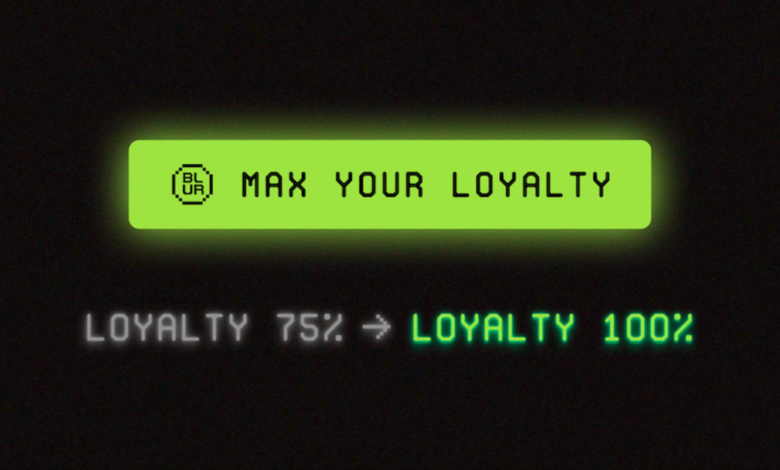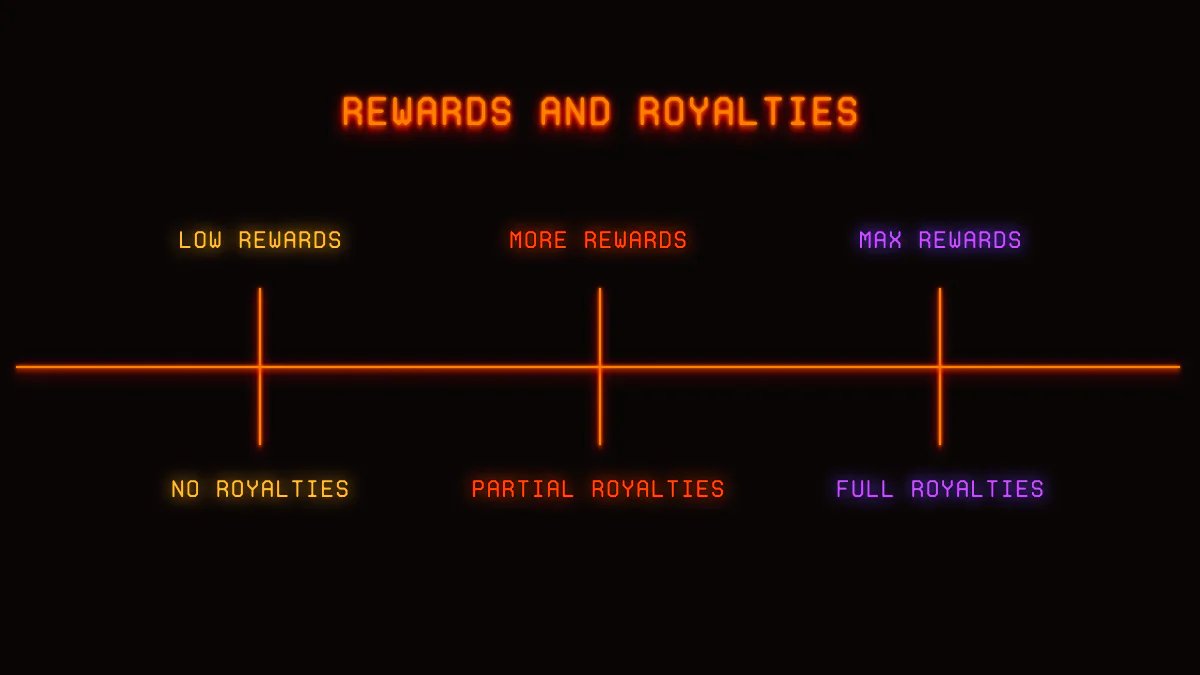NFT Marketplace Blur Is Beating OpenSea, but Will It Last?

The Web3 landscape is shifting. With the explosive rise of the NFT marketplace and aggregator Blur in recent weeks and months, OpenSea now finds itself in an uncomfortable and unfamiliar position: it now has a legitimate contender for the title of NFT marketplace leader.
If Blur’s steadily growing presence since its launch last year wasn’t indicative of this change, the previous month certainly has been. In the last 30 days alone, the platform has done $1.24 billion in trading volume. And OpenSea? Nearly $383 million. In the aftermath of Blur’s token launch on February 14, activity on the platform has skyrocketed. Every day since then, the marketplace has outpaced OpenSea in trading volume by as little as $35 million and as much as $100 million.
Given OpenSea’s historical supremacy, those numbers feel like they’re the wrong way around. So, how did a platform that has dominated the NFT ecosystem for the last five years by a significant margin find itself in this position? And what does Blur’s success mean for the broader Web3 ecosystem?
Up in a blur
It’s crucial to note the important ways in which OpenSea and Blur differ. The former is meant to appeal to as broad of a Web3 demographic as possible. While it does provide tools for NFT pro traders (whose focus is flipping digital assets for a profit), it mainly appeals to retail buyers. Retail buyers are more interested in buying NFTs for their art or are more likely to buy individual digital tokens here and there, but not in meaningfully high volumes or frequencies.
Blur has made a name for itself by exclusively appealing to that pro-trader demographic. Platform founder Pacman admitted as much in an early January interview with Token Terminal, and it’s a strategy that the company has gotten almost absurdly good at executing. If it sounds strange that a platform with a more limited demographic focus is leaving the Amazon of NFTs in the dust, keep in mind that this niche group holds considerable financial sway in the ecosystem.
Remember the insanely high levels of trading volume that Blur has been putting up lately? Ecosystem observers have noted that 50 percent of that volume comes from fewer than 300 wallets. On February 21, for example, just eight wallets on the platform traded 4,000 ETH or more on Blur, which rivals volume levels the entirety of OpenSea saw during its worst-performing days.
The high volume that comes out of the platform tends to center around a handful of sought-after, high-profile NFT projects whose names won’t surprise you: Bored Ape Yacht Club, Azuki, Mutant Ape Yacht Club, Pudgy Penguins, Moonbirds, Doodles, and the like.
How Blur encourages loyalty
One of the biggest reasons pro traders are flocking to Blur is its promise to users that it will reward them handsomely with future airdrops of the $BLUR token, totaling some $300 million during its next “season” of give-outs. At the time of writing, the token has a fully diluted market cap of $2.5 billion, and the Blur team is more than willing to throw its financial weight around to entice NFT traders to stick with them.
Loyalty points are one of Blur’s methods of doing this. While the platform allows users to list their NFTs on other marketplaces, those who list explicitly on Blur will receive a 100 percent loyalty score. More loyalty equals more rewards in the future.

It’s not just Blur’s innovations that have drawn users to it. Collector frustration with OpenSea has always been somewhat prevalent in the NFT space, even if just by virtue of the platform being the biggest name in the game. More legitimately, Web3 enthusiasts have been soured on the marketplace’s ever-shifting stance on creator royalties.
As of last October, OpenSea was the platform that had paid out the most royalties to creators by a wide margin, but a controversial November announcement from the company sparked what essentially amounted to Web3’s unionization movement. Beyond the royalties debate, it’s not hyperbole to say that almost nobody has been pleased with the platform’s stolen items policy, the marketplace’s reputation for not working well in times of high traffic, and its seeming centralized approach to, well, basically everything.
So it didn’t help when Blur swooped in with surgical precision to seduce traders looking for a marketplace that could give them what they were looking for without all that baggage (and reward them handsomely for making the switch). And, once Blur’s token launched and sent it into the stratosphere, OpenSea responded by cutting royalties and temporarily disbarring its platform transaction fees for certain collections, frustrating creatives who helped build the space even further.
Blur proponents have been quick to point out how the platform is paying out more royalties to creators than anyone else in recent weeks. While this is true, it’s partly because the marketplace absorbed a major portion of the trading volume its competitors would otherwise have facilitated those royalties payouts with.
OpenSea can’t lead the industry in royalties (as it once very much did) if its volume is being siphoned off to other platforms. What Blur has done better than OpenSea is incentivize people to pay full royalties on their NFT purchases through token rewards. It’s an interesting model for “enforcing” royalties in Web3 that comes with its own set of serious concerns, not least of which is that those payouts become contingent on a platform waving a shiny financial toy in front of a small group of influential users. It’s simply too early to claim that Blur’s approach to royalties works better than others simply because the numbers are doing well at the moment.

The problem with the numbers game
Blur’s wider-reaching effects on the Web3 space are manifold, but they might not all be positive. While high volumes and high royalties payouts are great for Web3, especially in a bear market, many in the space have been disturbed by the residual effect Blur’s success has had on the ecosystem.
Artist Bryan Brinkman highlighted a surreal moment on Blur last week when he witnessed NFTs from Michael Kozlowski’s recent Art Blocks drop, Metropolis, trading on the platform even when the images of the art were not loading on the site due to lag.
While the images did eventually load, the point remains: seeing digital assets from creatives treated as fodder for financial gain is more than a little unsettling for many in the NFT space. However, some have suggested that this dynamic is simply Blur capitalizing on what the Web3 market is really about, stripped of any rhetorical veneer of community or culture.
Regardless, Blur is moving forward in strident fashion. Dropping all pretense, the platform told its users to block OpenSea in a February 15 blog post. The reason? The way both OpenSea and Blur have set up their infrastructure means that creators can’t earn full royalties on both platforms — users have to choose.
Where do we go from here?
Blur needs to be careful in how it manages its user base and how it perceives its loyalty. It’s not the first NFT marketplace to entice pro traders with token farming. And it would be a mistake for the platform to presume that the wallets driving its phenomenal rise right now will do anything but jump ship if another offers them a better financial incentive to do so. Blur’s unabashed lean into the pro-trader demographic and clever airdrop mechanisms mean it’s likely to hold the interest of this demographic for some time, but the challenge will be drawing out loyalty in the long term.
We’re going to continue to see the same ~500 accounts rotating their capital between every marketplace that offers them free money
They farmed LooksRare
They farmed x2y2
Now they’re farming Blur pic.twitter.com/gN0XIWtroJ
— Kofi (@0xKofi) February 24, 2023
More important than what Blur does next is what its ripple effects do to the rest of the space. The marketplace’s monumental rise isn’t necessarily a bad thing; the NFT world should celebrate the fact that there is such an attentive and inventive platform out there dedicated to serving the needs of pro traders.
But big problems could start to rear their heads when one marketplace or demographic’s prosperity comes at the direct or secondhand expense of another’s, whether that’s in a zero-sum marketplace face-off or eroding royalties rights for the artists who built the space from the ground up. Blur claims OpenSea is a centralized antagonist in the NFT ecosystem, but making royalties payouts and marketplace dominance beholden to a group of just a few hundred NFT whales isn’t exactly the most decentralized system, either.
No one platform is responsible for putting pressure on the royalties dynamic in the NFT space. Still, Blur and OpenSea are at least somewhat culpable for pushing it forward into what many now see as an accelerated race to the bottom. Creators, as always, are caught in the middle.
Beyond this, Web3 needs to ensure it’s innovating and catering to the needs of every demographic in the space, not just pro traders. One group that would be great to start with is the creators who helped make the NFT ecosystem what it is today.
Instead of leaving them to wonder which platform will honor royalties on their work and in what manner, there needs to be a decentralized way for artists and project heads themselves to control them. You don’t have to be in Web3 for the art, but shaking its foundations apart in a mad scramble to the top of the numbers game will ultimately result in a victory not worth having.





